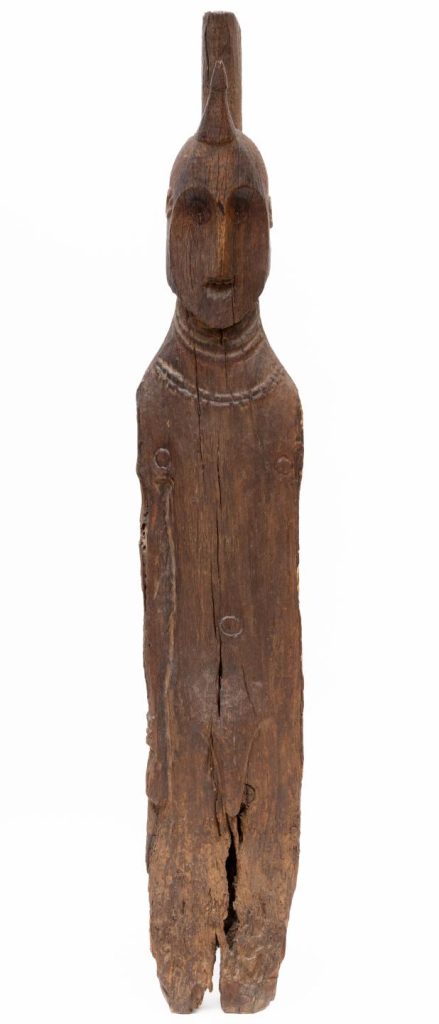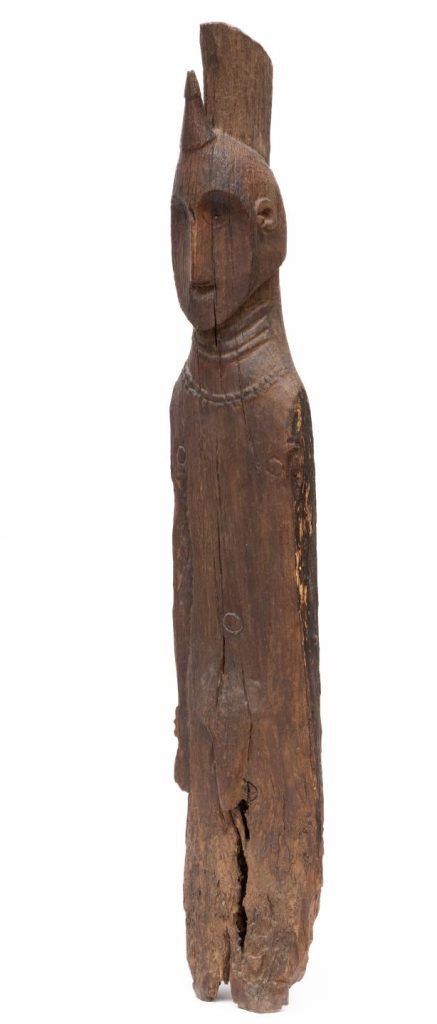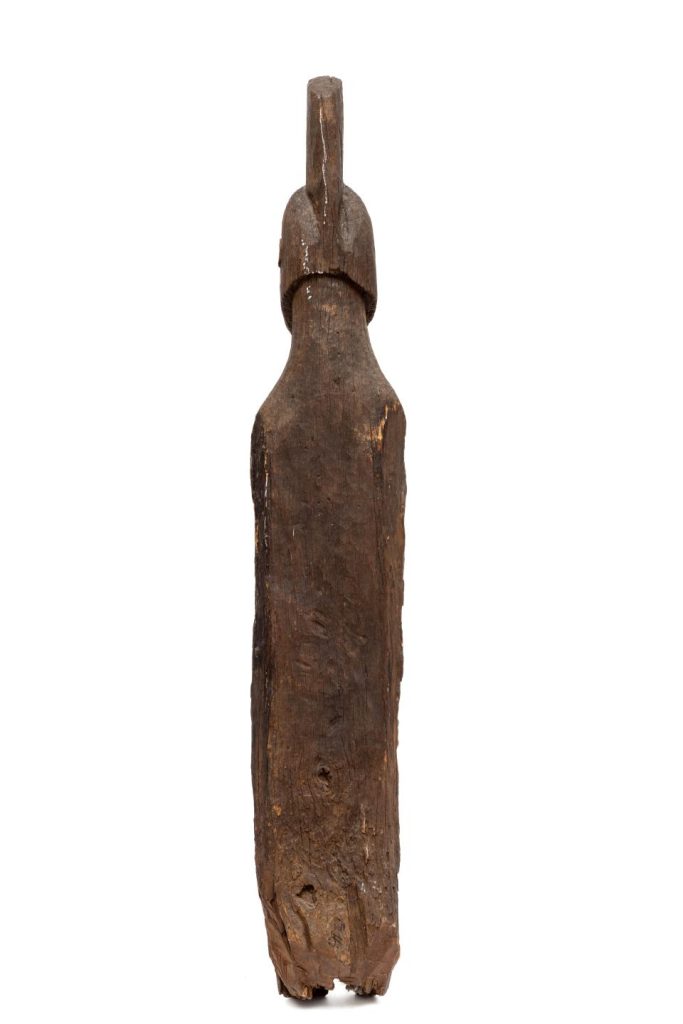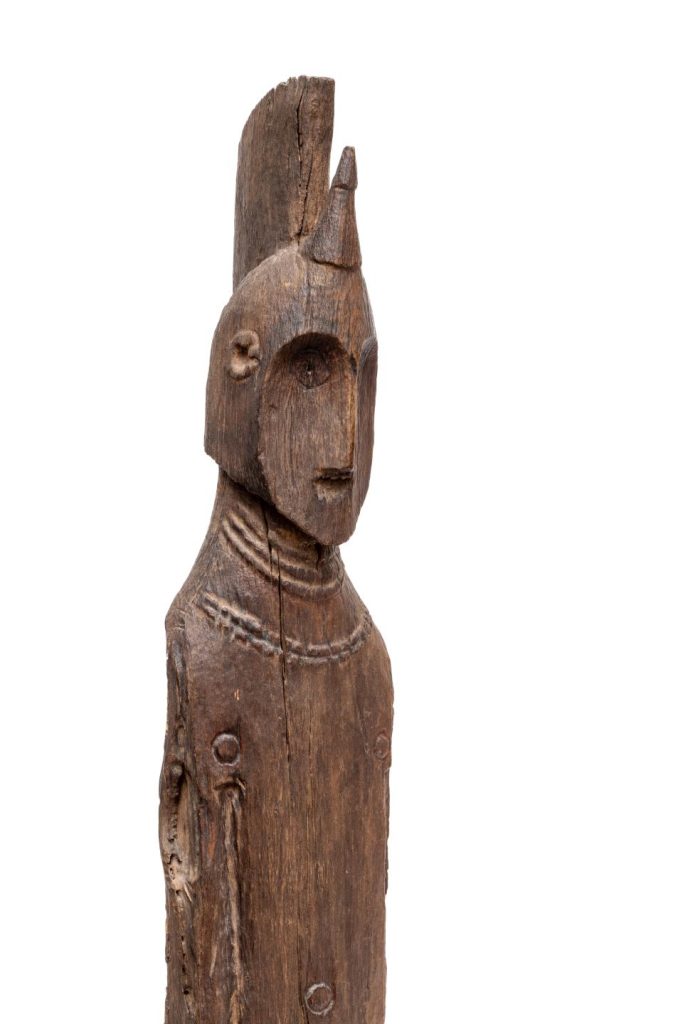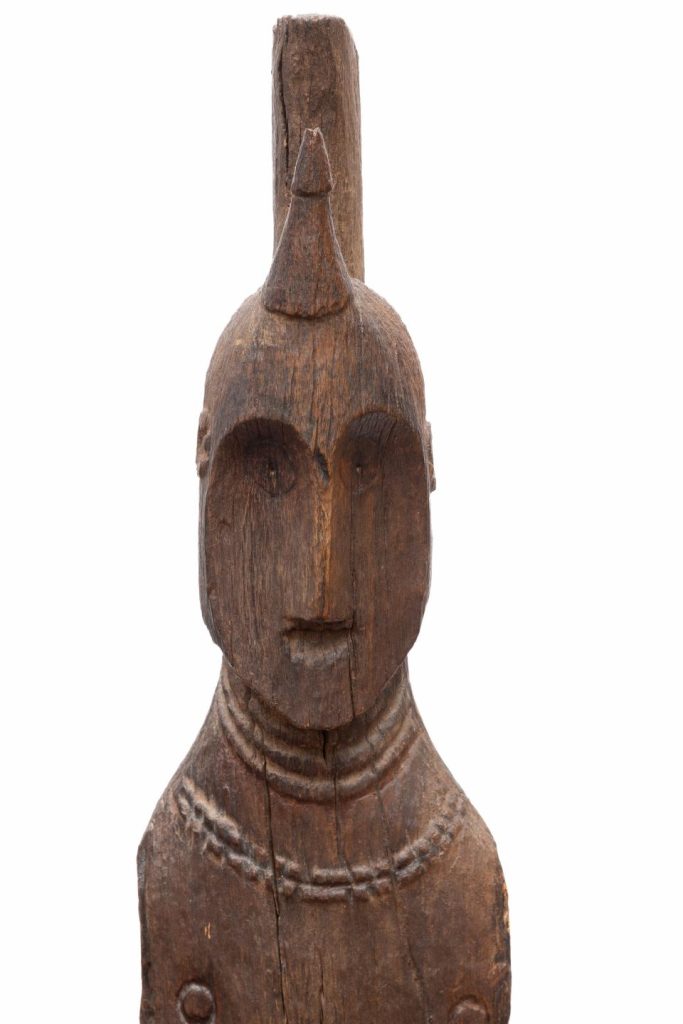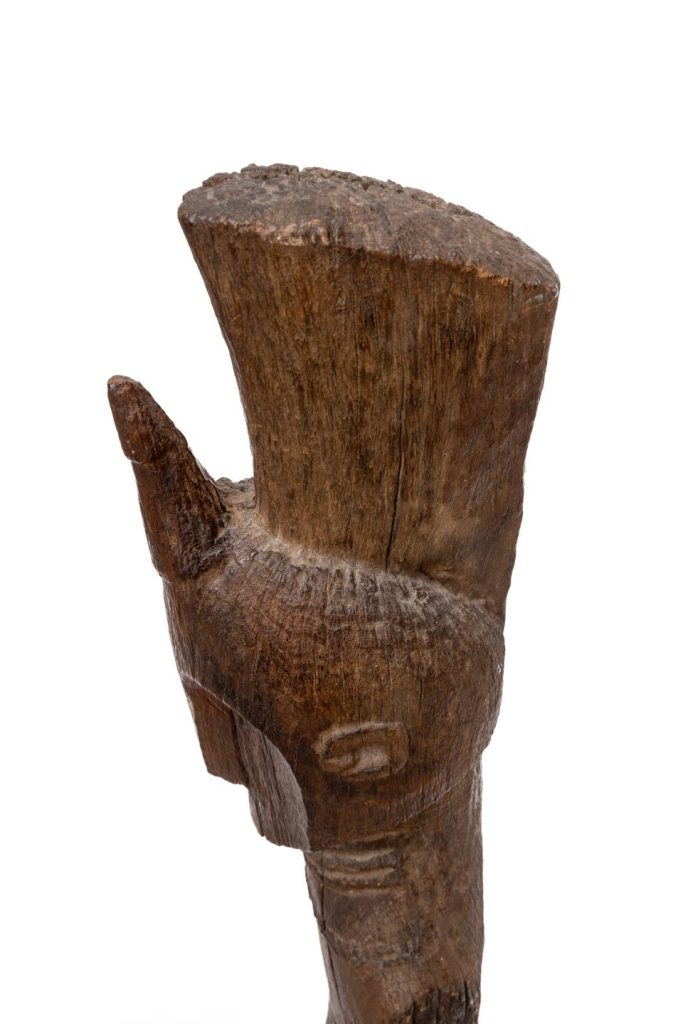Tribal art from three collections
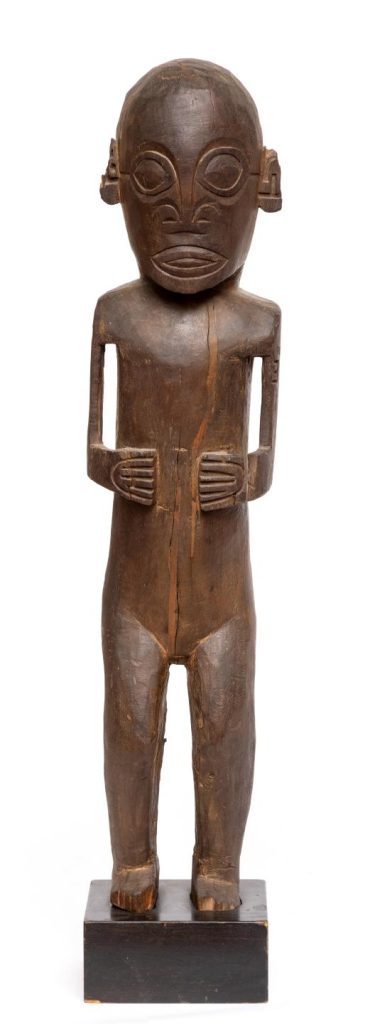
Fred Smit – fifty years of collecting
Teacher and historian Fred Smit made his first purchase in 1968 and would steadily expand his collection in the decades that followed with objects from distant cultures. His interest was mainly in Africa and Oceania and he bought from recognized galleries, including in Amsterdam, Galerie Lemaire, Galerie Mabuhay (Rob Kok), Kunsthandel Aalderink and Michel Thieme. His interests turned out to be diverse, in addition to masks and statues there were weapons, rugs and various utensils. The visitor was amazed by the order with which the collector in his home in Haarlem was able to place each object in the grand scheme of shapes and colors and which contributed to an imaginative interpretation of objects from exotic cultures.
When we look at the entire collection, it is mainly the objects from Oceania that we rarely find in Dutch collections. For example, one of the most striking objects is a Tiki from the Marquis Islands. Based on the wear and tear that has occurred over time, we can conclude that the statue must have been made sometime in the nineteenth century. The statue was purchased from Mathias Lemaire in 1975 for a considerable amount of Nlg for that time. 5,000.-. Unfortunately, we have not been able to find out how the seller obtained this statue (lot number 5624).

Furthermore, two pistils made of coral from Chuuk, an island in Micronesia, are worth mentioning. This also applies to the ceremonial ax from the Cook Islands, which must have been made in the mid-nineteenth century with a beautiful patina and may have an older date of manufacture. (lot numbers 5613 and 5614).
Finally, we would like to mention an image from the Middle Sepik. This time-damaged statue probably comes from the Yimar and therefore belongs to a fairly small corpus of anthropomorphic figures made by this people (lot number 5621).

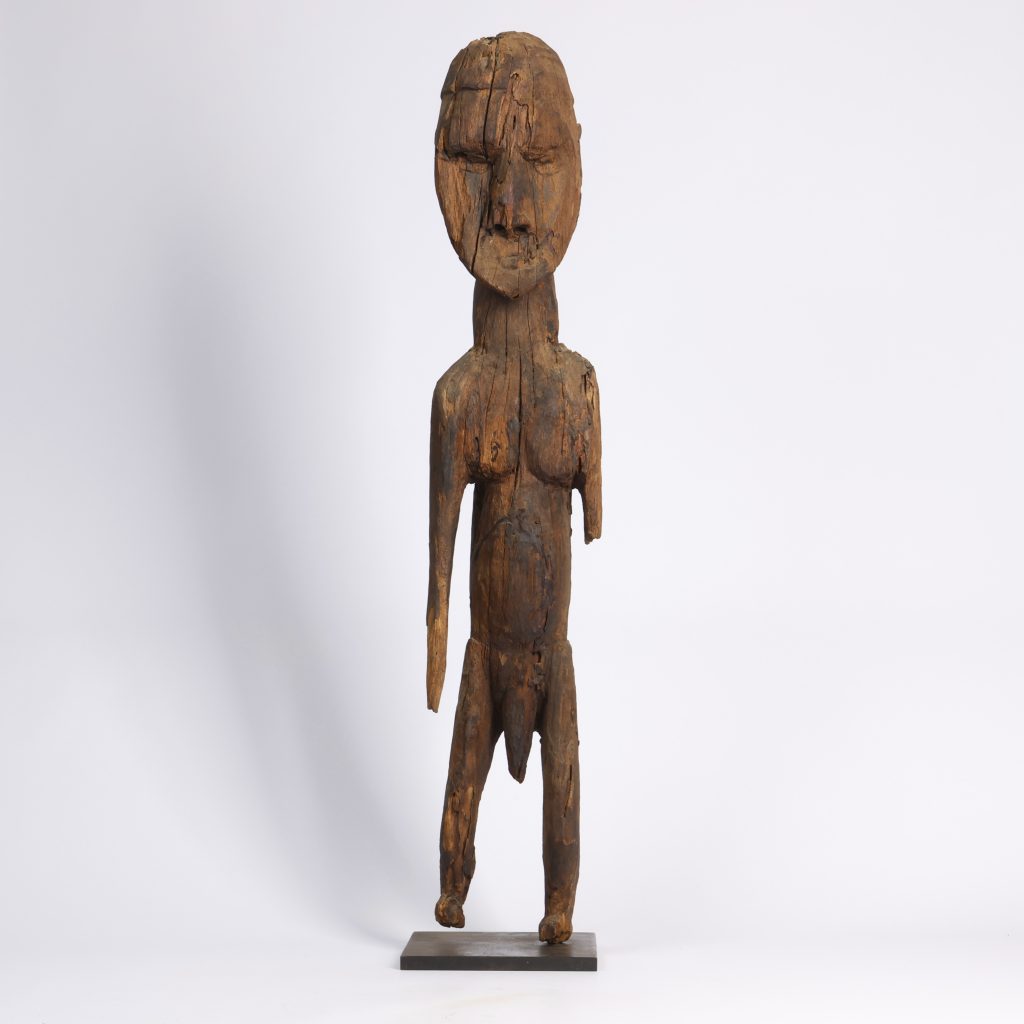
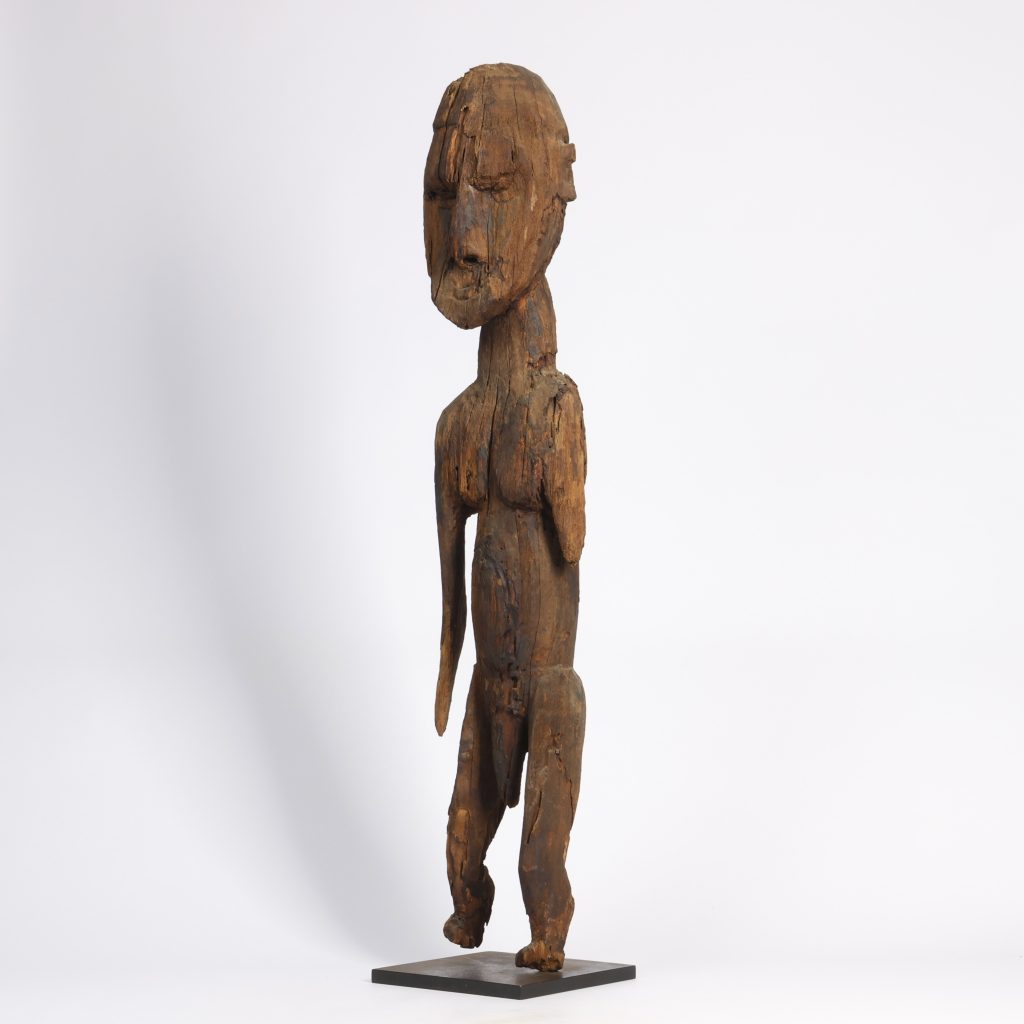
Two special ancestral figures from two different collections.
From another consignor comes the beautiful, rare Leti female ancestral figure (lot number 5601). Female ancestral figures of this size from the Leti Archipelago are less common than their male counterparts. A common feature of the Leti style figures is the prominence given to the head, which usually occupies a third of the statue. In the flat face, a prominent pointed triangular nose overshadows the crescent-shaped mouth. Arms and legs flank the fitted torso. Spherical calves enclose the female sex and symbolize strength and fertility. When brought outside, the image would once again radiate power through the inlaid white shell eyes. Collected by Piet Costerus and Anneke Costerus Brada, before 1930.
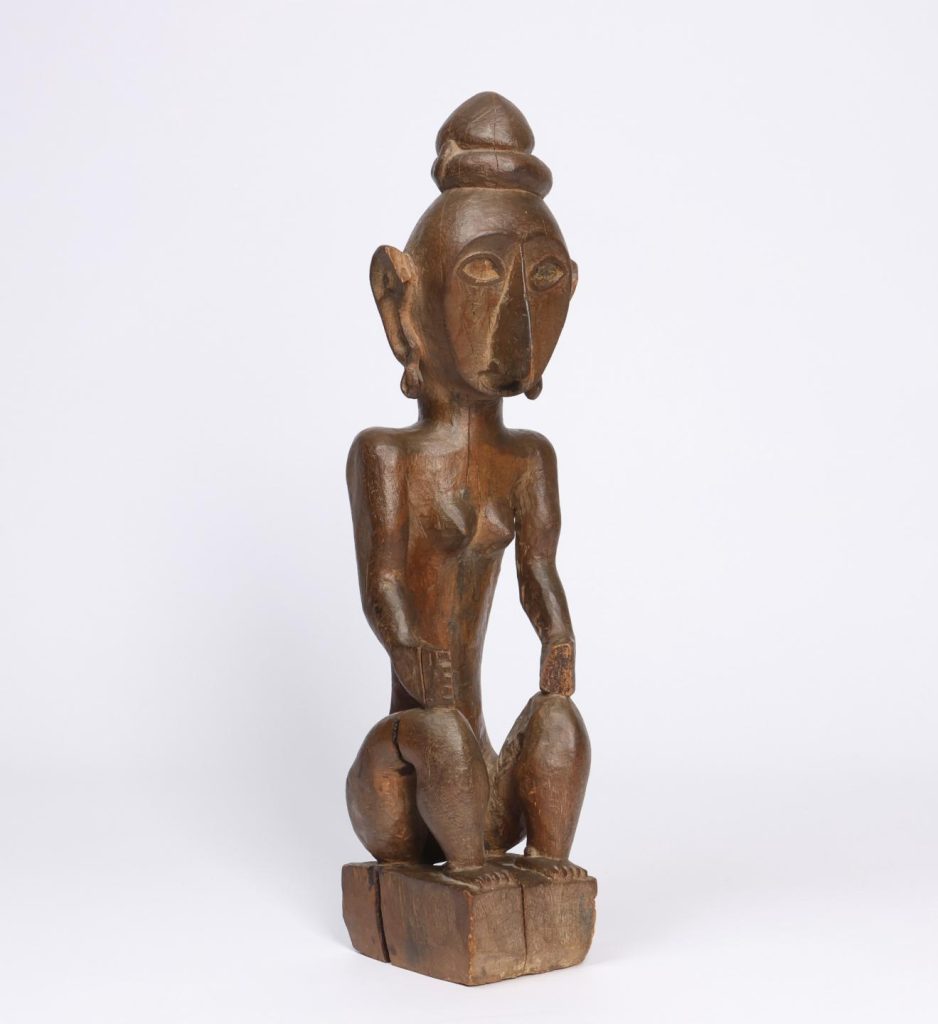
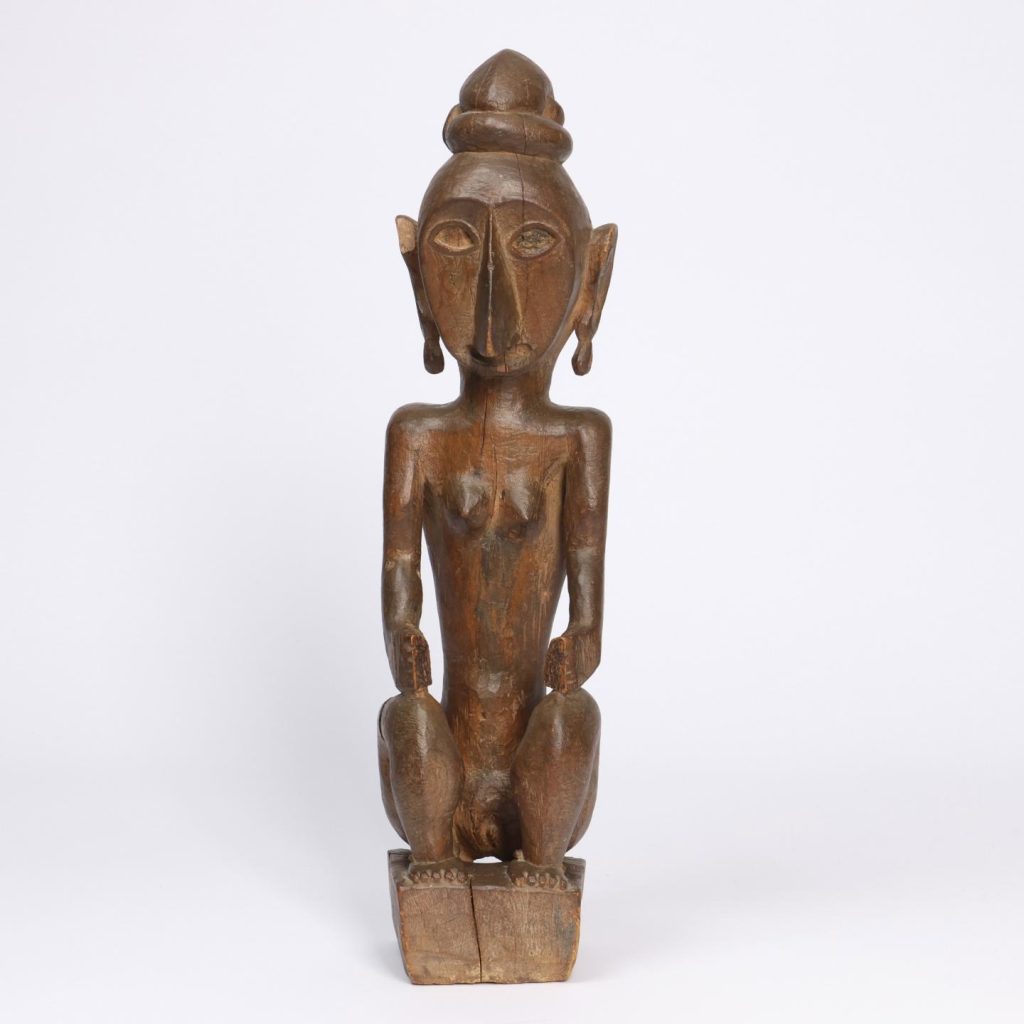
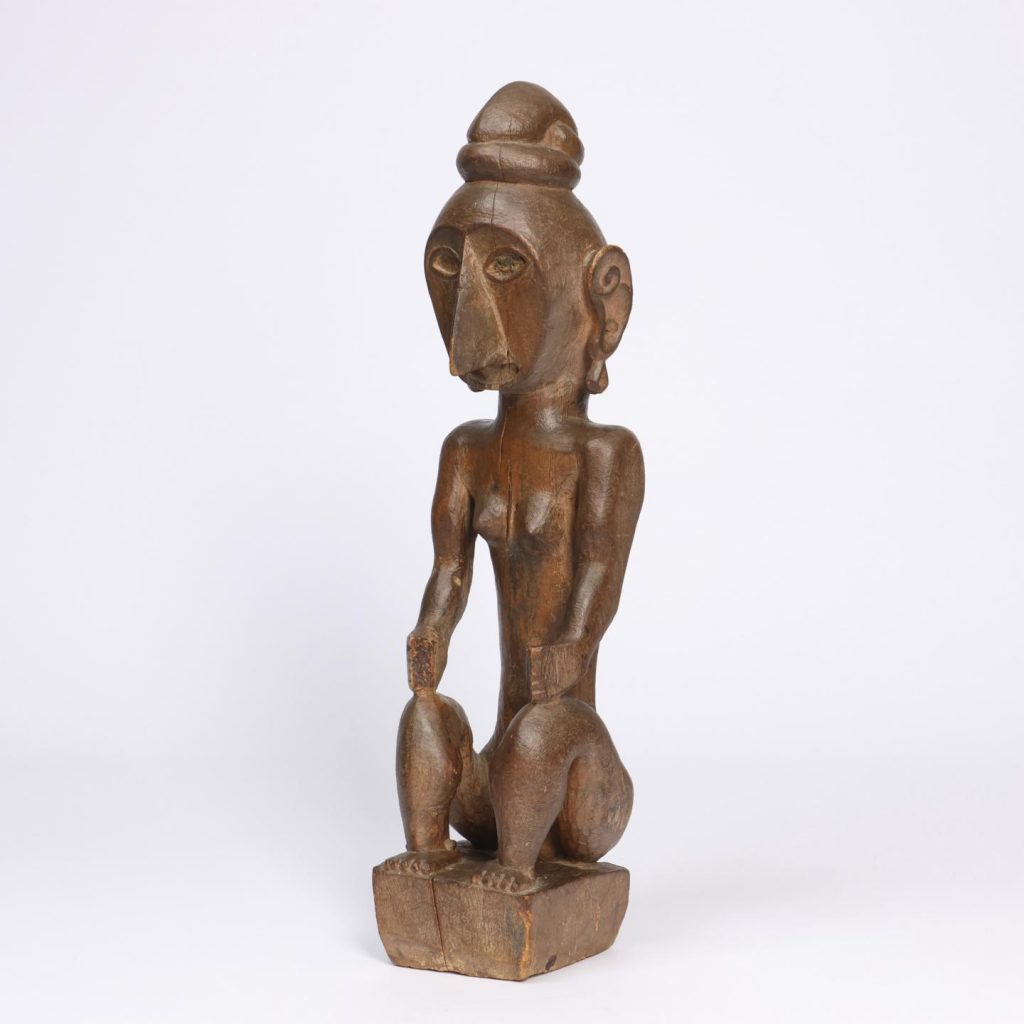
National Geographic documentary maker
An iconic funerary figure comes from Ethiopia of the Konso. (lot number 5350). Collected by the current contributor’s father during one of his many trips to Africa for National Geographic. He was director of photography there at the time the National Geographic Society began making documentaries for television. Such pole sculptures were made from a very hard type of wood and were made during life. This Konso, waga figure in the current auction is a very beautifully stylized, old and beautifully weathered sculpture, an iconic sculpture of its kind. He acquired this figure in situ, between 1967-1970.
